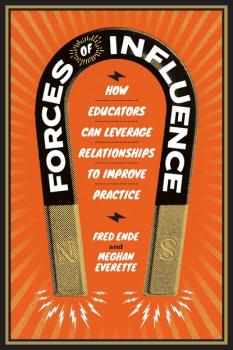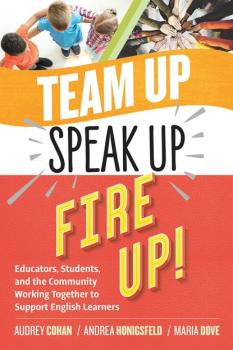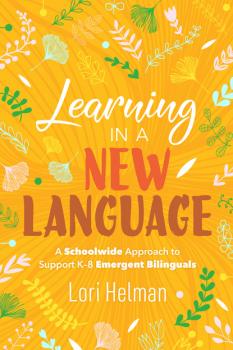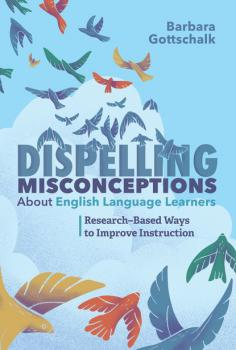ТОП просматриваемых книг сайта:
Прочая образовательная литература
Различные книги в жанре Прочая образовательная литература, доступные для чтения и скачиванияАннотация
Problem-based learning (PBL) represents a widely recommended best practice that facilitates both student engagement with challenging content and students' ability to utilize that content in a more flexible manner to support problem-solving. This edited volume includes research that focuses on examples of successful models and strategies for facilitating preservice and practicing teachers in implementing PBL practices in their current and future classrooms in a variety of K-12 settings and in content areas ranging from the humanities to the STEM disciplines. This collection grew out of a special issue of the Interdisciplinary Journal of Problem-Based Learning. It includes additional research and models of successful PBL implementation in K-12 teacher education and classroom settings.
Аннотация
The key role that farming plays in the economy of Indiana today owes much to the work of John Harrison Skinner (1874-1942). Skinner was a pioneering educator and administrator who transformed the study of agriculture at Purdue University during the first decades of the twentieth century. From humble origins, occupying one building and 150 acres at the start of his career, the agriculture program grew to spread over ten buildings and 1,000 acres by the end of his tenure as its first dean. A focused, single-minded man, Skinner understood from his own background as a grain and stock farmer that growers could no longer rely on traditional methods in adapting to a rapidly changing technological and economic environment, in which tractors were replacing horses and new crops such as alfalfa and soy were transforming the arable landscape. Farmers needed education, and only by hiring the best and brightest faculty could Purdue give them the competitive edge that they needed. While he excelled as a manager and advocate for Indiana agriculture, Skinner never lost touch with his own farming roots, taking especial interest in animal husbandry. During the course of his career as dean (1907-1939), the number of livestock on Purdue farms increased fourfold, and Skinner showed his knowledge of breeding by winning many times at the International Livestock Exposition. Today, the scale of Purdue's College of Agriculture has increased to offer almost fifty programs to hundreds of students from all over the globe. However, at its base, the agricultural program in place today remains largely as John Harrison Skinner built it, responsive to Indiana but with its focus always on scientific innovation in the larger world.
Информация о книге
Автор произведения Frederick Whitford
Жанр Прочая образовательная литература
Серия The founders series
Аннотация
This book is aimed at engineering academics worldwide, who are attempting to bring social justice into their work and practice, or who would like to but don't know where to start. This is the first book dedicated specifically to University professionals on Engineering and Social Justice, an emerging and exciting area of research and practice. An international team of multidisciplinary authors share their insights and invite and inspire us to reformulate the way we work. Each chapter is based on research and yet presents the outcomes of scholarly studies in a user oriented style. We look at all three areas of an engineering academic's professional role: research, teaching and community engagement. Some of our team have created classes which help students think through their role as engineering practitioners in society. Others are focusing their research on outcomes that are socially just and for client groups who are marginalized and powerless. Yet others are consciously engaging local community groups and exploring ways in which the University might 'serve' communities at home and globally from a post-development perspective. We are additionally concerned with the student cohort and who has access to engineering studies. We take a broad social and ecological justice perspective to critique existing and explore alternative practices. This book is a handbook for any engineering academic, who wishes to develop engineering graduates as well as technologies and practices that are non-oppressive, equitable and engaged. It is also an essential reader for anyone studying in this interdisciplinary juncture of social science and engineering. Scholars using a critical theoretical lens on engineering practice and education, from Science and Technology Studies, History and Philosophy of Engineering, Engineering and Science Education will find this text invaluable.
Аннотация
This is the true story of a young boy from Posey County, Indiana, who had a dream to fly. The outbreak of World War II enabled him to fulfill that dream. Cheerio and Best Wishes is told entirely through the letters he wrote to his family and friends. Detailed narrative and commentary provide explanation and background information. One hundred thirty-eight letters are presented in this book. It is highly unusual to find this many letters from one person, curated by his family and recently rediscovered by his son, along with carefully created photograph albums. The story starts in rural southern Indiana and follows the young volunteer as he goes westward to California and New Mexico to be trained to fly bombers. From the United States, he travels via South America and North Africa to England and deploys with the Eighth Air Force. The accounts of his journeys and experiences are detailed, ranging from entertaining to spine-tingling. Moments of high drama intermingle with the mundane nature of war. Together the letters and pictures in this book (the originals are now preserved for posterity in the Purdue University Flight Archives) offer a comprehensive and cohesive story of how US airmen were prepared and trained for war, and detail the daily experience of a bomber pilot flying missions over Germany. The letters of one young flyer reflect the experience of thousands of Americans who volunteered to go to war in the 1940s. His experiences were those of a generation.
Аннотация
It can be said that no greater work on the subject of military theory exists than Sun Tzu's «The Art of War.» It is certainly the oldest known book on the subject having been written some 2500 years ago. It has been studied for centuries and the wisdom contained within it is applicable not only to the battlefield but also to much of everyday life. Presented here is the fully annotated translation of Lionel Giles.
Аннотация
In Forces of Influence, Fred Ende and Meghan Everette contend that schoolwide success starts with relationships—not only between students and adults, but also among all adults up and down the education hierarchy. It's by leveraging these relationships that educators can influence outcomes and effect real change. But how can educators make sure they exert their influence astutely and sensitively, navigating education's priorities and pressures while keeping their work focused on the mission? This thought-provoking book helps readers navigate this tricky terrain, introducing four «forces,» or levels, of influence and explaining how educators can use them to support one another's practice and push for positive outcomes for all learners. The authors* Explore each of the four forces—the pull, the push, the shove, and the nudge—and explain why they work and what research shows about their effectiveness. * Introduce the Forces of Influence Leadership Matrix (FILM), a framework that identifies how the four forces connect and helps readers determine when to use which force, with whom, and how. * Provide advice on how to course-correct by switching and layering the forces for positive results—and how to recover from setbacks. * Offer copious tools to support this work, including role-plays, self-assessments, templates, and questions to spur reflection and action taking. Everything educators do requires them to build, sustain, and leverage relationships. With this guide, they no longer have to wing it.
Аннотация
Cohan, Honigsfeld, and Dove bring together current research, authentic examples of best practices, and voices from the field to champion the power of purposeful collaboration and provide educators with resources that will empower them to support English learners (ELs) and their families. Guided by four core principles (common purpose, shared mindset, diverse team membership, supportive environment), the authors explain how to meet the challenges of collaborating with ELs and help all stakeholders—administrators, teachers, students, parents, community leaders—develop new and effective ways of working together for the success of each learner.
Аннотация
Within today's multilingual communities, a growing percentage of students are emergent bilinguals—bringing to school a home language other than English and thus poised to become bilingual as they acquire the new language. As a result, school leaders need to have essential background knowledge and a wealth of strategies at their fingertips to ensure that all students are prepared for college, career, and civic engagement. In Learning in a New Language, author Lori Helman offers educational leaders a comprehensive and accessible guide to best practices for supporting students from culturally and linguistically diverse backgrounds in a school environment that embraces equity. Helman discusses: *Changing demographics that require educational leaders to enlarge and enhance their approaches *The importance of engaging families in forming a cohesive school community that contributes to student success *Fundamental approaches to creating equity for linguistically diverse students in the school change process *The role of language in academic learning and what makes learning in a new language unique *Evidence-based strategies for literacy and content-area classrooms *Practical tips for where to start in supporting emergent bilinguals in the classroom, and presents dozens of online resources for further exploration. The responsibilities of educational leaders continue to expand as they work toward managing school sites and ensuring equity of student opportunity and achievement. Helman provides a one-stop resource for the foundational knowledge and practical guidance needed to strategically take on these responsibilities.
Аннотация
Nearly three-quarters of public schools in the United States enroll English language learners (ELLs). That means teachers at all grade levels need to know how to help these students achieve full academic English language proficiency. In Dispelling Misconceptions About English Language Learners , Barbara Gottschalk dispels 10 common misconceptions about ELLs and gives teachers the information they need to help their ELLs succeed in the classroom. From her perspective as a teacher of English as a second language, Gottschalk answers several key questions: *Just who is an English language learner? *Why is it important to support home language maintenance and promote family engagement? *What are the foundational principles for instruction that help educators teach ELLs across the content areas? *How can teachers recognize and incorporate the background knowledge and experiences ELLs bring to class? *Why is it important to maintain high standards and expectations for all students, including ELLs? *How can a teacher tell when an ELL needs special education versus special teaching? By answering these questions, and more, Gottschalk gives teachers a crystal-clear understanding of how to reach ELLs at each stage of English language acquisition. Her expert guidance reinforces for teachers what they are already doing right and helps them understand what they might need to be doing differently.
Аннотация
Now that we've sold ourselves to ourselves, shuffling letters and sounds around to hide the pain, how do we represent the uncanny valley in which we've set up shop? In <i>Cursed Objects</i>, Jason Christie recoils in horror at the thoroughness of his self, then begins to write toward a new understanding brokered between all the things that define him and who he thinks he should be and interrogates how we reduce people to words, especially online, turning them into objects.










